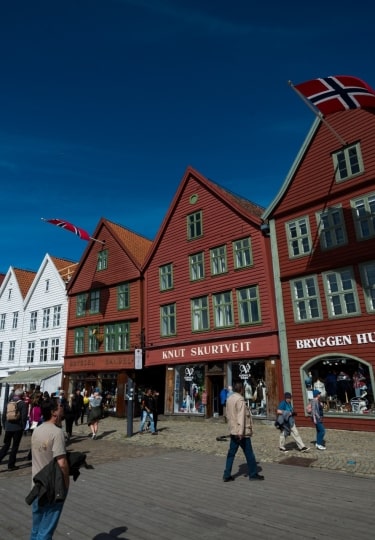The best time to visit Scandinavia for long, sunny days and outdoor living is summer. This far north in Europe, the sun only sets for a few hours on the days between June and August. This means outdoor bars and beer gardens are busy late into the night and locals are celebrating with everything from festivals to berry picking, hiking along Norway’s fjords, and swimming in the chilly Baltic Sea.
Having said this, winter brings an entirely different beauty to Scandinavia, with log fires, snowy landscapes, and often, the Northern Lights rippling across the sky.
Of course, Scandinavia is a big place and there are differences between places like Copenhagen in the south and Honningsvag, at the northern tip of continental Norway, deep inside the Arctic Circle. The further north you head, the greater the extremes of day length and temperature. And wherever you go, there is beauty to be found in every season.
Visiting Scandinavia by Season
Summer
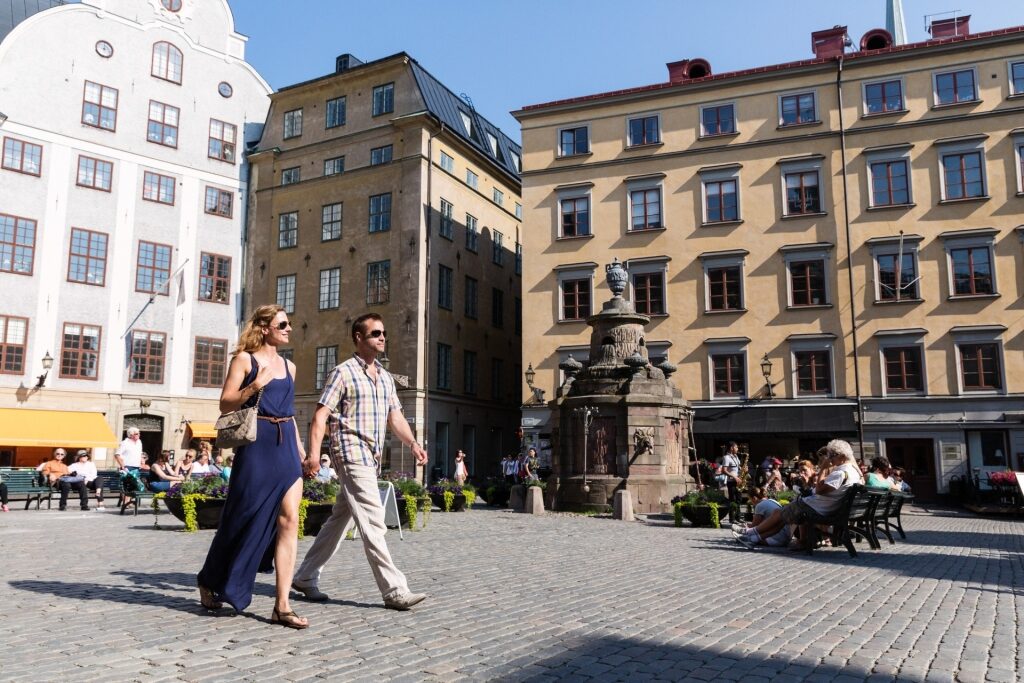
Stockholm, Sweden
Summer is the best time to go to Scandinavia and the busiest time for tourism. The days are long, the countryside is in bloom, and the sea is warm enough, if you’re hardy, for swimming. Temperatures vary according to where you are.
In Sweden, July is the warmest month with an average daily temperature of 65°F (18°C). Temperatures in Denmark are similar. In Flam, on the west coast of Norway, expect slightly cooler averages, with July seeing 61°F (16°C) as the norm.
June brings the summer solstice, a time of great festivity. North of the Arctic Circle, the sun will just skim the horizon at midnight and even into August, you can expect just a few hours of darkness.
Fall
While September still enjoys pleasant weather, by November, winter is well and truly setting in. The first snows will fall and the days are increasingly short. Expect an average daily temperature of 54.5°F (12.5°C) in Stockholm in September, dropping to 37.2°F (2.9°C) by November.
September is a good time to see the fall colors, especially along the west coast of Norway. This is also a good month for city breaks; Copenhagen, for example, still enjoys an average of five sunshine hours daily in September, dropping to just two in November.
Winter
Winters in Scandinavia are cold, but the Gulf Stream prevents the mercury from plunging to the really bitter temperatures you might encounter in Alaska and northern Canada. January and February are the coldest months. In Stockholm, the average then is 30°C (-1°F), with Denmark a degree or so warmer and Oslo a chilly 27°F (-3°C).
Much of sub-polar northern Scandinavia is covered with snow in winter, although the Scandinavian cities to the south, like Copenhagen, are more likely to experience rain.
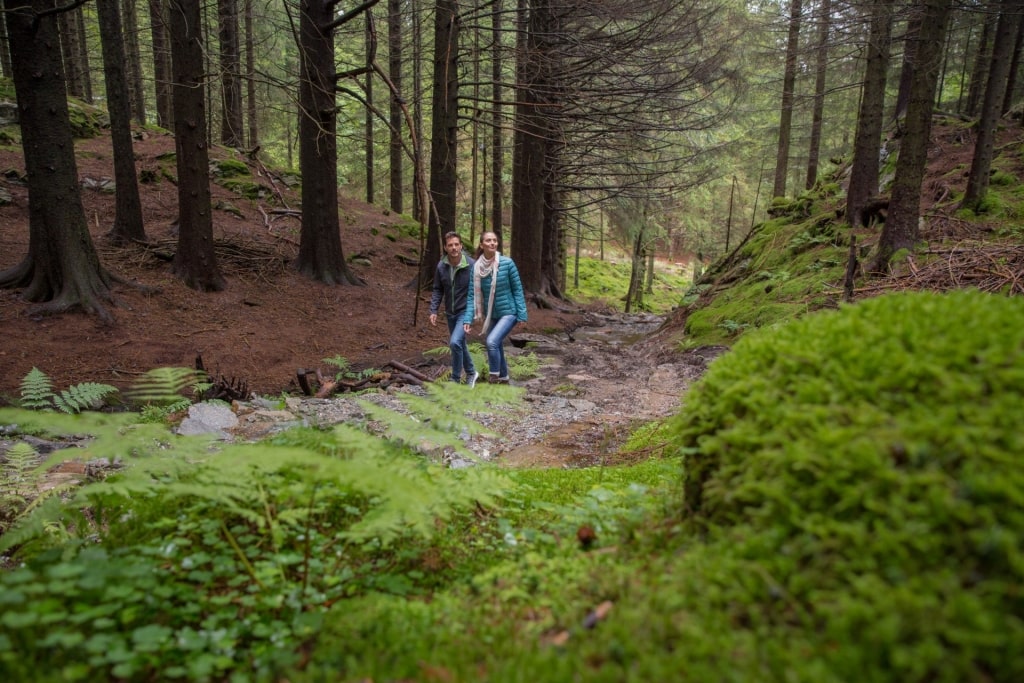
Mount Floien, Norway
Spring
March, April, and May see the winter snows thawing and temperatures beginning to rise. March and April are still cool. By April, any snow may be turning to slush, but May is a good time to visit Scandinavia, with the days getting longer and the countryside returning to a lush green.
Expect average temperatures of 51.4°F (10.8°C) in Stockholm in May and 53.5°F (12°C) in Copenhagen. In the Norwegian fjords, the meadows are strewn with wildflowers by May, making this a beautiful time to visit, especially if you enjoy hiking.
When Is Rainy Season?
While Scandinavia doesn’t have a clearly defined rainy season, ironically, the summer months, which is the busiest time, receive the most precipitation. In Stockholm, August is one of the wettest months, with 2.6 inches (65mm) of rain. There’s a similar pattern in Copenhagen, when August receives 3.1 inches (80mm) of rain.
Norway is different; head up to the North Cape and you should see very little rain in summer. June and July are the driest months. In contrast, January has the most precipitation, with 4.9 inches (125mm), which falls as snow.
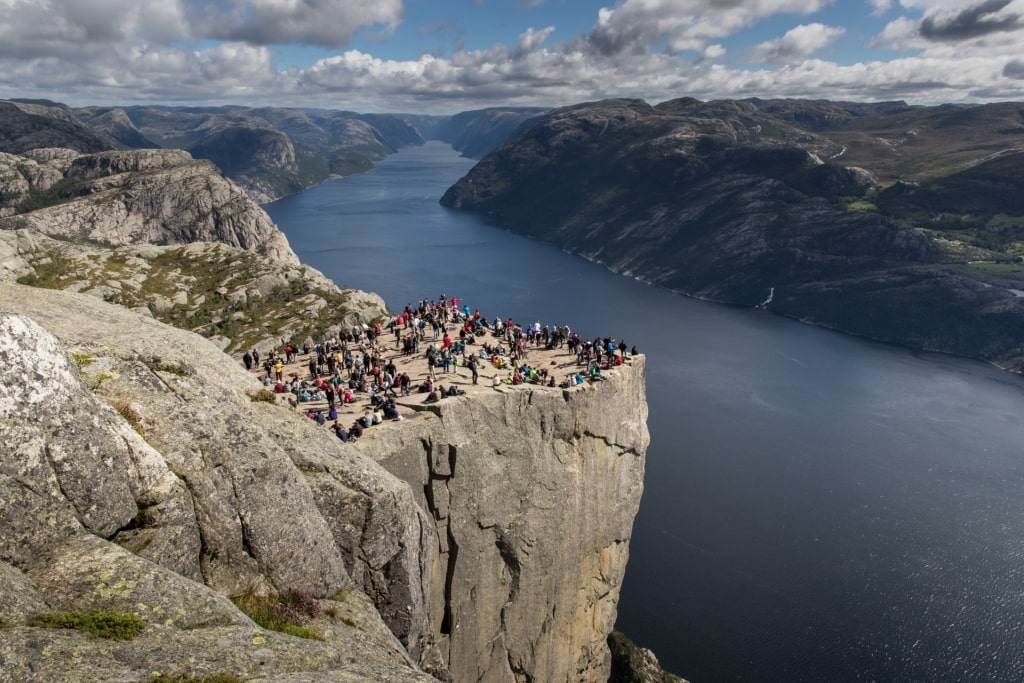
Pulpit Rock, Norway
When Is High Season?
High season in the cities and the Norwegian fjords is late spring and early summer, from early June to mid-July. The days are long, with “white nights” celebrations and relatively warm temperatures. Locals tend to take their domestic vacations in July. Many people own a summer cabin and will decamp there for hiking, swimming in lakes, and enjoying the long, light nights.
June is the best time to visit the Norwegian fjords. The waterfalls are at their most dramatic in early June, swollen with meltwater as the last of the snow disappears.
There’s another peak in the Arctic ski resorts in December, for Christmas-themed getaways in a snowy winter wonderland. Norway and Sweden have a busy ski season all winter long and also attract aurora hunters. There’s a chance of seeing the aurora any time from October to March.
When Is Shoulder Season?
Shoulder season is late spring and early fall. The summer crowds have yet to arrive in the cities and fjords in May and locals are not yet on vacation. Hiking trails are opening as snow disappears and the days are getting longer.
September can be a wonderful month to visit Scandinavia as the trees begin to assume their fall colors. There will be more rainfall, but temperatures are still pleasant.
When Is Low Season?
Low season in Scandinavia is November, and then January and February. These are months when the locals hunker down, the temperatures hover around freezing, and the daylight hours are very short. In the north of Scandinavia, the sun doesn’t rise at all, which is known as polar night. There is more likely to be cloud cover in January, making this a less than prime time for aurora spotting.
Read: The Ultimate Scandinavian Food Guide
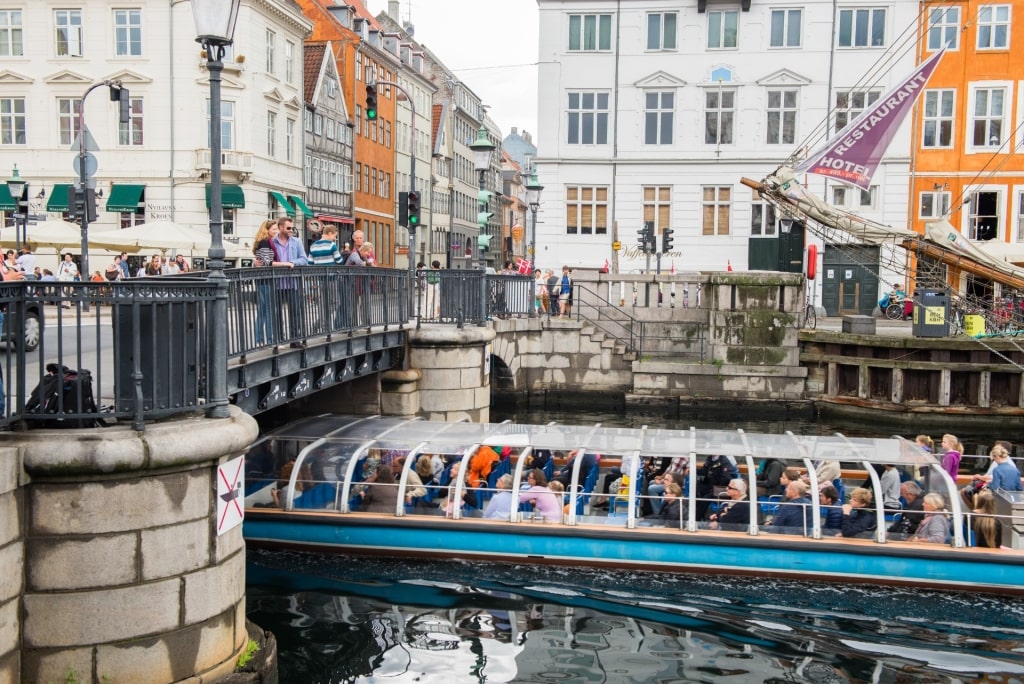
Copenhagen, Denmark
Discover the culture and natural beauty of this region aboard one of Celebrity’s cruises to Scandinavia.
